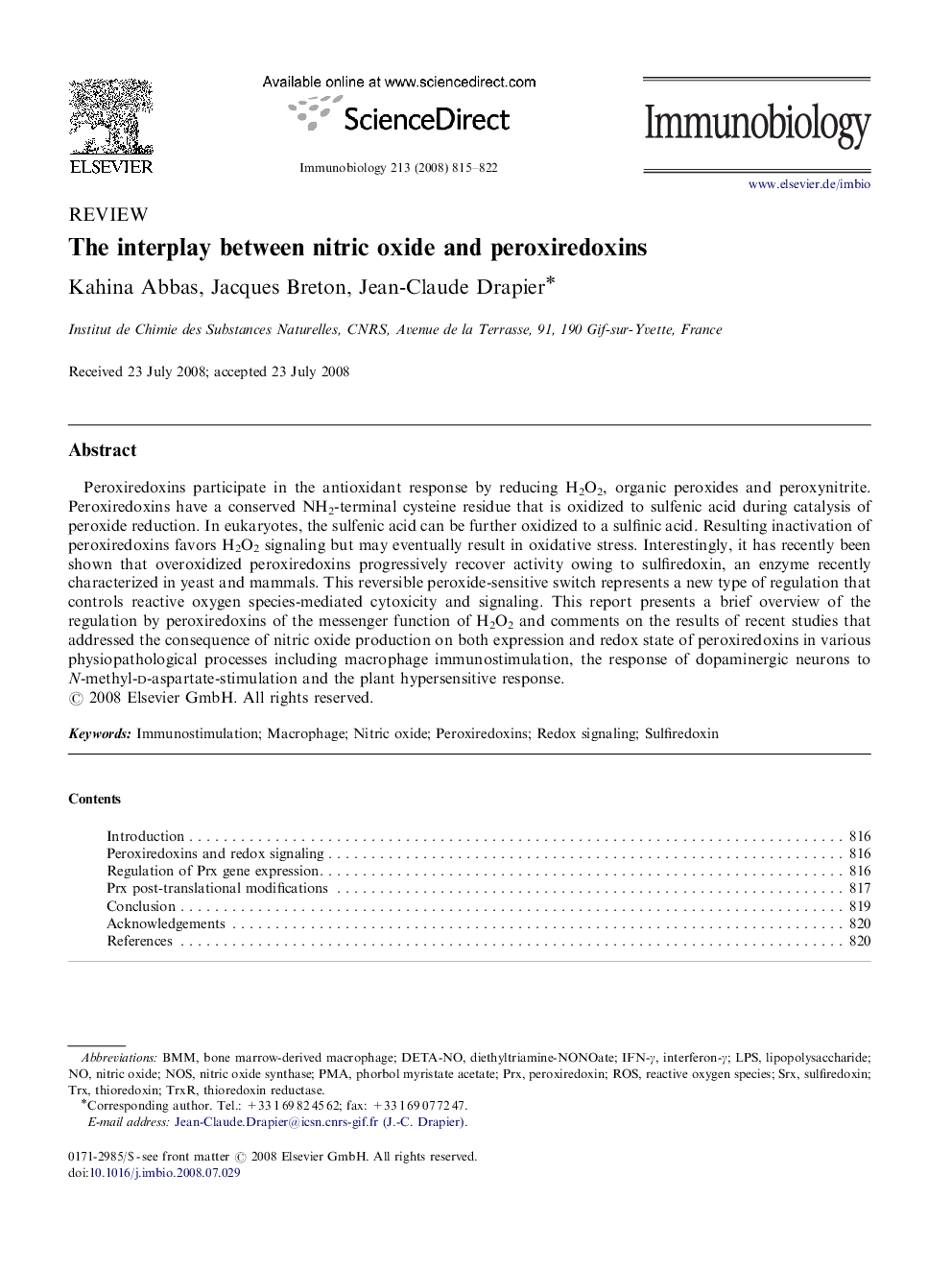| Article ID | Journal | Published Year | Pages | File Type |
|---|---|---|---|---|
| 2183636 | Immunobiology | 2008 | 8 Pages |
Peroxiredoxins participate in the antioxidant response by reducing H2O2, organic peroxides and peroxynitrite. Peroxiredoxins have a conserved NH2-terminal cysteine residue that is oxidized to sulfenic acid during catalysis of peroxide reduction. In eukaryotes, the sulfenic acid can be further oxidized to a sulfinic acid. Resulting inactivation of peroxiredoxins favors H2O2 signaling but may eventually result in oxidative stress. Interestingly, it has recently been shown that overoxidized peroxiredoxins progressively recover activity owing to sulfiredoxin, an enzyme recently characterized in yeast and mammals. This reversible peroxide-sensitive switch represents a new type of regulation that controls reactive oxygen species-mediated cytoxicity and signaling. This report presents a brief overview of the regulation by peroxiredoxins of the messenger function of H2O2 and comments on the results of recent studies that addressed the consequence of nitric oxide production on both expression and redox state of peroxiredoxins in various physiopathological processes including macrophage immunostimulation, the response of dopaminergic neurons to N-methyl-d-aspartate-stimulation and the plant hypersensitive response.
